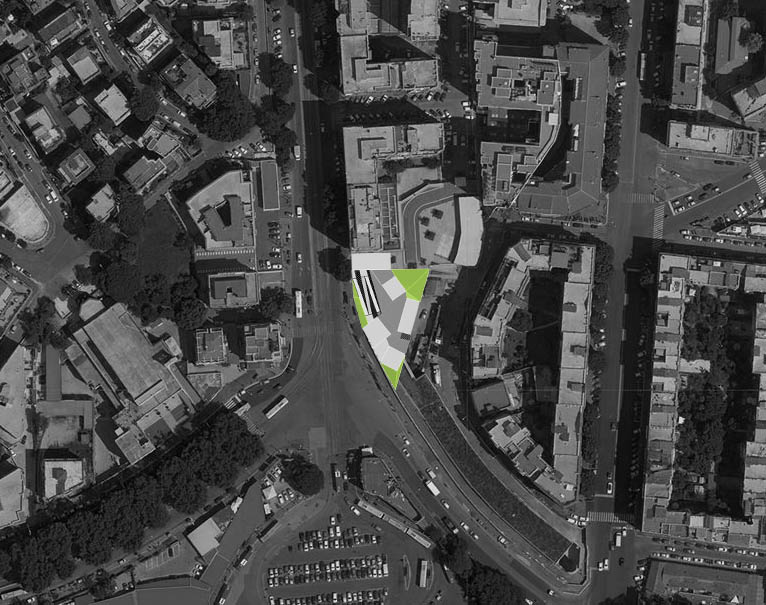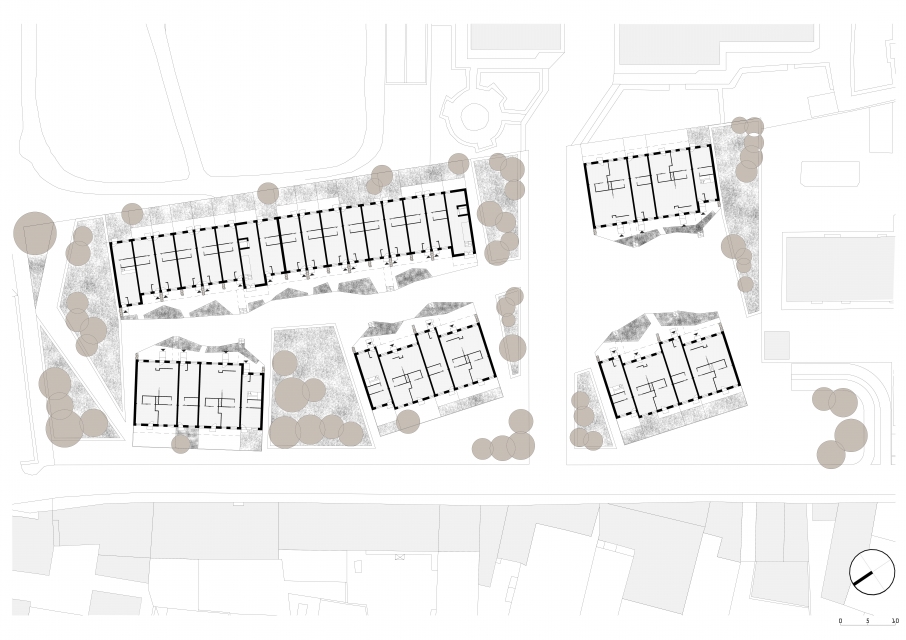OLTRISARCO AREA - VIA ASLAGO - PROJECT ANALYSIS AND DESIGN SOLUTIONS
The site project is located in the Southern part of the city of Bolzano, in an area close to the Isarco River named Oltrisarco. The area is near the industrial area and it’s crossed by a highway and a railway. The site is located in Via Aslago and it’s about 7000 square meters. Actually the site consists in 7 residential buildings built during the ’40. IPES, the local authority responsible for social housing residences, planned to demolish those buildings and commissioned 80 new accommodations.




